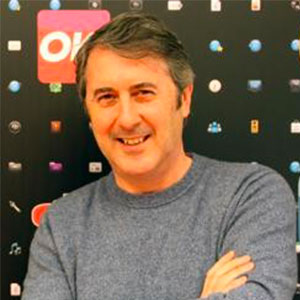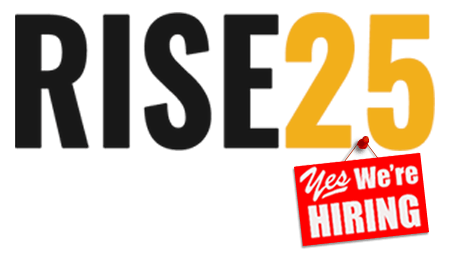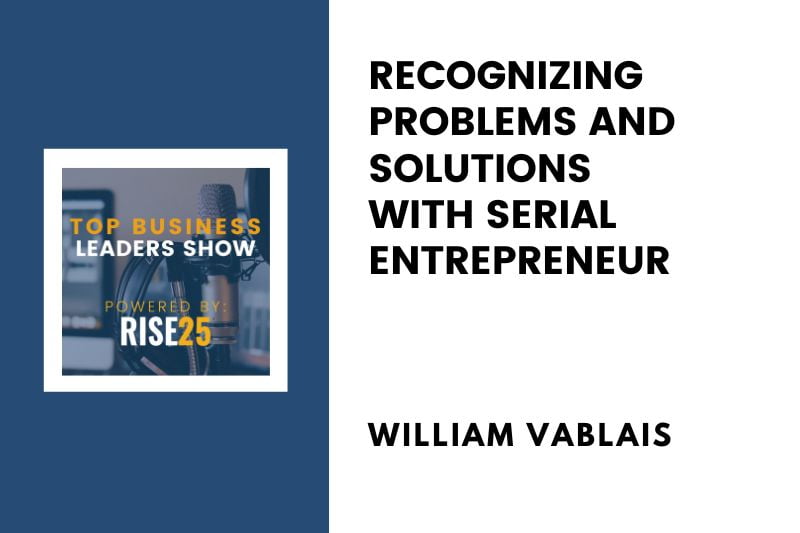 William Vablais is a business development executive with over 20 years of experience in developer relations, business development, digital content, licensing, and product marketing. He is the Founder and CEO of FirstWave3D Corp and most recently launched FlowingEdge, a company that optimizes file delivery without using the cloud.
William Vablais is a business development executive with over 20 years of experience in developer relations, business development, digital content, licensing, and product marketing. He is the Founder and CEO of FirstWave3D Corp and most recently launched FlowingEdge, a company that optimizes file delivery without using the cloud.
William is specialized in adapting multimedia technologies and has a proven ability to identify and discover technologies and business opportunities before others. He enjoys fixing things that others find challenging. William is fascinated by the internet of things and creating real business opportunities while connecting the dots.
Here’s a glimpse of what you’ll learn:
- William Vablais discusses his product, FlowingEdge, and how it is revolutionizing file sharing
- The genesis of FlowingEdge and the growth it is undergoing
- William shares his story, discussing how he is always looking for solutions to problems
- What other endeavors is William working on in the tech sphere?
- William looks ahead to future goals for FlowingEdge
- The mindset young entrepreneurs need to have as they grow and work on their careers
In this episode…
Technology is constantly improving, so why do many systems seem to rely on outdated methods? Are you constantly looking for problems to find solutions to? Systems are often shackled by technology that was once cutting edge — but now is being left behind.
William Vablais is an entrepreneur and the mind behind FlowingEdge, seeking to revolutionize how we share files. The ability to transfer files has been crucial for a while, but the time it takes for a file to go from end to end has often been a limiting factor. FlowingEdge architected everything from the ground up to avoid the weight of outdated tech in order to create a newer, faster way of getting files from point A to point B.
In this episode of the Top Business Leaders Show, Chad Franzen welcomes William Vablais, the Founder of FlowingEdge, to discuss how his company is changing the file-sharing game. William reflects on his entrepreneurial journey and discusses the various businesses and projects he has been a part of. He also discusses his involvement in building the next generation of entrepreneurs and shares advice on how young entrepreneurs can grow in their journey.
Resources mentioned in this episode:
- Chad Franzen on LinkedIn
- Rise25
- Email the team at Rise25: support@rise25media.com
- William Vablais on LinkedIn
- FlowingEdge
- Email William Vablais: william@flowingedge.com
- FirstWave3D
- Entrepreneurship and Innovation Center
Sponsor for this episode…
At Rise25, we’re committed to helping you connect with your Dream 100 referral partners, clients, and strategic partners through our done-for-you podcast solution.
We’re a professional podcast production agency that makes creating a podcast effortless. Since 2009, our proven system has helped thousands of B2B businesses build strong relationships with referral partners, clients, and audiences without doing the hard work.
What do you need to start a podcast?
When you use our proven system, all you need is an idea and a voice. We handle the strategy, production, and distribution – you just need to show up and talk.
The Rise25 podcasting solution is designed to help you build a profitable podcast. This requires a specific strategy, and we’ve got that down pat. We focus on making sure you have a direct path to ROI, which is the most important component. Plus, our podcast production company takes any heavy lifting of production and distribution off your plate.
We make distribution easy.
We’ll distribute each episode across more than 11 unique channels, including iTunes, Spotify, and Google Podcasts. We’ll also create copy for each episode and promote your show across social media.
Co-founders Dr. Jeremy Weisz and John Corcoran credit podcasting as being the best thing they have ever done for their businesses. Podcasting connected them with the founders/CEOs of P90x, Atari, Einstein Bagels, Mattel, Rx Bars, YPO, EO, Lending Tree, Freshdesk, and many more.
The relationships you form through podcasting run deep. Jeremy and John became business partners through podcasting. They have even gone on family vacations and attended weddings of guests who have been on the podcast.
Podcast production has a lot of moving parts and is a big commitment on our end; we only want to work with people who are committed to their business and to cultivating amazing relationships.
Are you considering launching a podcast to acquire partnerships, clients, and referrals? Would you like to work with a podcast agency that wants you to win?
Contact us now at support@rise25media.com or book a call at rise25.com/bookcall.
Rise25 Co-founders, Dr. Jeremy Weisz and John Corcoran, have been podcasting and advising about podcasting since 2008.
Episode Transcript
Chad Franzen 0:01
Chad Franzen, here co-host of the Top Business Leaders Show where we feature CEOs, entrepreneurs and top leaders in the business world. This episode is brought to you by Rise25. We help B2B businesses reach their dream relationships and collect, connect with more clients referrals and strategic partnerships, and get ROI through done for you podcast. If you have a B2B business and want to build great relationships, there’s no better way to do it than to profile the people and companies you admire on your podcast. If you have a B2B business, and want to build great relationships, go go to Rise25.com to learn more, or email us at support@rise25media.com William Vablais is a serial entrepreneur living at the bleeding edge of technology. He’s also a developer evangelist for disruptive technology, and in this case paradigm to paradigm shifts on how people will move files between each other. William, thanks so much for joining me today. How are you?
William Vablais 1:03
Very well, thank you. Very nice to be on the show. So thank you for this opportunity.
Chad Franzen 1:09
Yeah, I think fairly recently, you have launched a company called FlowingEdge. Can you tell me about it? And what you guys do?
William Vablais 1:17
Yes, it’s very exciting, actually FlowingEdge. By the very name, flows data around the edge of the internet, it doesn’t use clouds for sending data back and forth. So what we did, we looked at the problem about a year ago, as to how moving large files is such a pain in the ass. You know, basically, every time you want to send something, everyone gets bitten by the same problem, which is, you know, how do you send a file attachment on email, if it’s over 25 megabytes, it never gets to its destination, right? You’ve probably come across that and then spend the next two or three hours trying to chop it up into pieces, right? And the amount of effort and time multiplied by the amount of people doing it is probably humongous. So there’s got to be a better way. This is the 21st century, why are we still dealing with technology from way, way back and email? Every single day I use it is getting worse and worse, it seems to be more and more broken every day. Right? And it’s 50 year old technology as well. The other thing is that moving files, file sharing has been sort of muddled, the message has been muddled a little bit in terms of what it what it really is, to me file sharing is, if I create some content, I want to send it to the person that can actually massage that content or work on it on their really big machine editing suite, whatever it is that them to do their magic and send it back to me. So I can actually see what’s going on, right. But somewhere online file sharing has become oh, you have to upload it to a nameless server, then when it’s on that name, the server will sit on it for a while maybe even give you some bloatware to figure out who’s actually allowed to see it, who’s not allowed to see it, who’s downloaded it, who hasn’t. And then you download it. But to download it, you have to wait for a 50 year old technology to send you an email, that’s that’s the 50 year old, and it could end up in your spam. So you might never find it right. So you go through all this process, you know, just to send the file, and then the person at the other end has to do the other the reverse to actually send the file to you, right. And we said, “Good God, you know, the technology is out there to do this.” Several years ago, I was involved in a peer to peer technology company called Morpheus about sharing files. And that was look, look for a file anywhere on the internet and then bring it down to me. So we decided to do the other way around, we have a file that we can’t want to send it the other way around to send it to somebody or many people, right. So we took that technology and applied it. But we also did a couple of other things, which is very interesting.
We found that basically, when you send the file, you’re using also an old protocol to send it. So everyone that sends a file knows what’s TCP IP is right. So generally, an engineer would probably know what TCP IP is. It’s the it’s the way that you know, computers talk to each other when you connect them together. Right? If you open a box, it says TCP IP. So that’s really good, because it’s a technology that’s over 40 years old, actually. And it was developed so that when you had a big file and 40 years ago, a big file would probably be a megabyte. That would be humongous size in those days. Right. You know, and it would send it over telephone lines, analog telephone lines, right. So for this type of protocols, you know, you had a wobbly to telephone or line and you want you to send all this data across that telephone line, you have to, you have to wait up and say, I’m going to send you a block of data, wait for it. And then the other person at the other end would say, right, send, send me the next bit. And then the person at this time would say, All right, I’m gonna send you another one, you got it? And the other one would say yes. And they would do this all the way through all the plots, because, of course, when you have a wobbly line, you could lose data and lose files, right? So we say, well, that’s completely crazy. Because for a small for a small file, one meg, that’s okay. But now we’re dealing with a terabyte of data, perhaps, or 100 megabytes, you know, 1000s, of times bigger than what we had 40 years ago. So and we’re still using the same protocols to send it, right. So it doesn’t make any sense to do that. So we decided to look elsewhere. And we’re using a much more up to date protocol, which doesn’t have to do all the handshaking every single time, it speeds everything up really quickly. But we also speed it up. Because we don’t use a cloud. There’s no upload, no download. So we started showing this to people, we created a product for B2B so that they could actually integrate this into their products as a B2B product. And we created the API’s for the for that product. But you can’t really go to a B2B and say, we’ve got a really great product. And here’s the API’s and throw them a big gigantic catalogue of API calls and stuff, because it’s not very exciting, is it? So? So we said, well, we got to do a demo, and show them what it can do. So that’s what we started doing. And we created a little demo that actually just consumed the API is underneath and showed what it could do. So there’s a little shell, and it consumes the API’s that we do, and so on. And soon enough, within, you know, a couple of minutes after talking to people, we realized that the demo was actually lightyears ahead of what is out there in the industry anyway. So we said, well, we’ll have a consumer based product, and then we’ve got the B2B product, and the B2B products we’ve created, we continue to create, because it just is an evolution of that. And it’s ideal for companies who want to do all the functionality of what we provide without doing all the heavy lifting that we’ve done already. So we just given the API’s and off they go, because you can’t really go into a bit of a company and say, we’ve, we’ve done everything now, it’s this is the way it’s going to be for now, this is our AP, and this is how you’re going to send fast, because the IT guys will probably say, well, we spent all year cleaning our networks, and you’re not going to come in here and tell us what to do and get it all messed up. Because we’d like our nice network. And we keep, you know, a clean house here. So we don’t trust your product. So we said okay, well, here’s the API’s, you integrated into your products that you trust, and you can roll it out whatever you like. And that actually worked much better. Right? So then we had this consumer product on our hands. And we said, well, what are we going to do with it? So we started showing it around, and we’ve got several large companies that are interested in using it, but also are already beta testing it. And we’re going to be launching it in a series of third world countries, actually, which is a very interesting approach. And the reason for that is that you think, you know, a company like Nigeria or Ghana, or South Africa would be Oh, yeah, they’re Africa. You know, that’s a third world country or whatever it is. But in actual fact, they’re, they’re probably more advanced than we are over here in the US, because they haven’t had to go through all the evolution and pain going through each generation of new technology that we’ve had to get through. And so with that evolution and change and investment, there’s a bit of a reticence of actually going forward at a much faster rate, whereas they went from nothing to 5G, right, and so they’ve got the 5G networks all connected. They just don’t have ways of moving stuff around, because they still have to upload it and download it. That’s the only option. Our only conditioning between everybody that I’ve spoken to is, oh, how do I send a file to you? Oh, you have to upload it and then you have to download it right? That’s that’s the normal way of doing it. Now you don’t have to do that. I can send the file directly from my phone.
And I can send it from there anywhere in the world to any device and without your cloud in the way.
[continue to next page]








